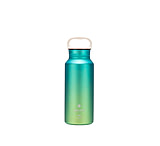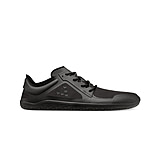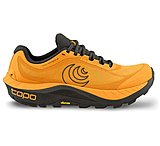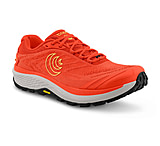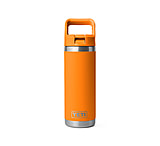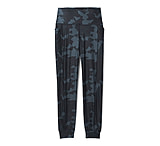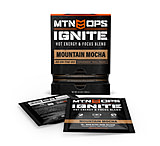Running Shoes & Gear for Men, Women and Kids for Triathalons, Marathons, Trail Running from Top Brands including Salomon, Altra, Hoka One One and More! — 888 products / 6,890 models — Page 1
Are you ready to take your running to the next level? Whether you’re a beginner or a born-to-run veteran in search of your next runner’s high. Look no further than our wide selection of running gear and apparel. From trail running shoes to hydration packs, we've got everything you need to conquer the great outdoors.![]()
But we're not just about the gear. At CampSaver.com, we believe that running is about more than just putting one foot in front of the other. It's about pushing yourself to new limits and discovering new trails, achieving longer distances, doing your next marathon, and more. That's why we offer a variety of resources and guides to help you plan your next adventure. From training plans to trail reviews, we've got you covered.
So whether you're a seasoned distance runner or a new runner prepping for your first run, join the CampSaver.com community and start your next adventure today!
At Campsaver, you can find all of your trail running, running gear, needs like running shoes, hydration packs from trusted brands like Hoka, La Sportiva, Inov-8, and more!
FAQs
What are the benefits of running?
There are many benefits of running, including improved cardiovascular health. Running is a great cardiovascular exercise that can help to improve heart health, lower blood pressure, and reduce the risk of heart disease. Running is also an effective way to burn calories and can help with weight loss and weight management. Running can help build stronger muscles and bones, which can improve overall fitness and reduce the risk of injury.
Regular running can help to improve endurance and stamina, allowing you to run for longer and with less fatigue. It also helps release endorphins, which are chemicals in the brain that act as natural painkillers and can improve mood and decrease stress and anxiety. You can also expect to feel increased energy levels and reduced feelings of fatigue.
What are the 4 types of running?
There are several types of running, but four main categories are:
Distance running: This type of running involves running long distances, usually on roads or tracks. Examples include marathons, half-marathons, and 10K races.
Sprinting: Sprinting is a type of running that involves short, high-intensity bursts of speed. Examples include 100m, 200m, and 400m races.
Middle-distance running: This type of running involves distances that fall between sprinting and distance running. Examples include 800m and 1500m races.
Trail running: Trail running is a type of off-road running that takes place on natural terrains such as trails, mountains, and forests. Trail running can be more challenging than road running due to the uneven terrain, inclines, and obstacles, but it also can be more scenic and adventurous.
These are the main types of running, but there are also other types such as hill running, cross country, ultramarathon, and so on.
What is the difference between running on a treadmill and running outside?
Running on a treadmill and running outside are both forms of cardio exercise, but they do have some differences.
-
Surface: The biggest difference between running on a treadmill and running outside is the surface. Treadmills have a moving belt that provides a consistent, flat surface to run on, while outside surfaces can vary greatly, including pavement, dirt, gravel, and even hills.
-
Weather: Running outside means dealing with the weather conditions, be it hot, cold, wet, or windy. Treadmills provide a controlled environment, which can be more comfortable to run in.
-
Impact: Treadmills often have a softer surface than running outside on concrete, which can be less stressful on the joints. However, some research suggests that running on a treadmill may also lead to a greater impact on the joints than running on a softer surface such as a dirt path.
-
Variety: Running outside can offer a lot more variety in terms of scenery, and can also provide some mental benefits of getting out in nature. Running on a treadmill can feel monotonous, and can be less mentally stimulating.
-
Speed and incline: Treadmills can allow you to easily adjust speed and incline, which can be beneficial for interval training and hill training, but running outside offers more natural variation in terrain.
Ultimately, it depends on personal preferences, goals, and circumstances. Some people prefer the convenience of running on a treadmill, while others prefer the challenge and change of running outside. Mixing up both can be beneficial for your overall running experience.
What are some running tips?
Here are some tips for running:
-
Start slowly: If you're new to running, it's important to start slowly and gradually build up your distance and intensity. It's better to start with shorter runs and increase the distance over time than to try to do too much too soon and risk injury.
-
Wear the right shoes: Invest in a good pair of running shoes that are comfortable and provide the right level of support for your feet. Make sure you replace them as soon as they start to wear out.
-
Warm-up and cool down: Before you start running, make sure to do a proper warm-up to get your muscles ready for the workout. After you finish running, take a few minutes to cool down and stretch your muscles.
-
Stay hydrated: Running can be dehydrating, so make sure you drink enough water before, during, and after your run.
-
Listen to your body: Pay attention to how your body feels while you're running and don't push yourself too hard. If you feel pain or discomfort, stop and rest.
-
Mix up your workout: Mixing up your running routine by running at different paces, on different surfaces, and in different environments can help to prevent boredom and improve your overall fitness.
-
Get enough rest: Make sure you get enough rest and sleep to give your body the time it needs to recover and repair itself.
-
Set realistic goals: Set realistic goals for yourself, such as increasing your distance or running time, and track your progress. Having a goal to work towards can help to keep you motivated.
-
Lastly, make sure to have fun and enjoy your runs!








































